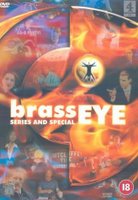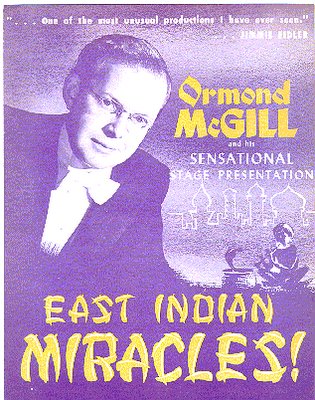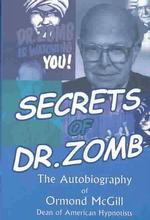Jesus, Mary, and Joseph! I was at the Apple store the other day and saw the new Video iPod. That's gotta' be the
wettest piece of technology I've seen in a long time, as jaw-dropping as, maybe, the original iPod itself. I hadn't really played with the iPod Photo either, so I was unprepared for the visceral shiver I got when I began playing with this new generation of iPods. The addition of a color screen that's useful for more than song-info display is a
fundamental change in the nature of the iPod.
Seeing this new technology, and feeling that shiver of paradigm shift, made me think to the other times in my life in which a new technology gave me that kind of jolt. I can't really remember how hip I was to the effects of technology back in 1974, but I remember well the day when my parents bought their first portable calculator. It was about the size of a high-end Texas Instruments technical calculator today, with an LED (!) display and the basic functions -- addition, subtraction, multiplication, division, and maybe a square root key or a percentage key. The price: a bargain at eighty bucks.
I remember playing with big multiplications and being delighted with how quickly I could get an answer to such probing questions as: what's 23,445 times 8537?
Buckminster Fuller once said that the two years he spent figuring out all the mathematics for his
geodesic domes could have been compressed into two days if he had had access to a modern calculator. How extraordinary that the tool I held in my hand back in 1974 was destined to change the world.
The next great technology I grokked was the cassette deck. By the late Seventies, I had a pretty nice stereo set up, and I was able to make myself mix tapes out of the one or two best-loved cuts per
record. I also taped favorite songs off the radio. I became quite expert at starting and stopping the tape exactly where I wanted it, and also learned to drop the
needle quite accurately into the little space between tracks.
[On a side note, I recently got a good laugh while hanging out with some friends in their early twenties. They had inherited an old cabinet-style record player and some records from their parents, and I impressed them with my dazzling ability to nail the chosen track. It was a bit of a shock for me to realize that these kids had
never used a record player growing up!]
Making mix tapes was an early step in the personal empowerment of the music lover. For a while, I had two tape decks so I could dub songs from other people's mix tapes onto my own. All through college, I collected unusual alt rock and punk tunes, and I guarded them jealously. With the technology of the day, where could I ever hope to find another copy of seminal punk band
Wire's Dot Dash?
Back around '79 or so, I also got my first inklings of a new, portable cassette player that was due on the scene. My orthodontist (!) first told me about the little Walkman he had picked up in Japan. "It sounds really good, just like you're listening to a great stereo," he had said.
This is one of those examples -- and there have been several others in my life -- in which the description of the technology didn't communicate (to me, at least) just what powers it held in store. I thought, "Huh, that sounds cool," and left it at that. Sometime later, while hanging out at Myer Emco, a moderate high-end stereo store in Bethesda, MD, my buddy Mike (who looked like
Doug Henning, right down to the long hair and gap teeth) hooked me up with a Walkman to test out. The demo tape (which I still have somewhere) was of an airshow, with airplanes roaring past overhead.
Freaked the shit out of me. I actually yanked off the headphones and accused Mike of cranking up some big speakers in the background. When it became clear that I was in fact listening to the little tiny Walkman I knew I had to have one.
Although I used my cassette Walkman occasionally (on the bus on my way to work at Al's Magic Shop, for instance), I discovered that the device had one fatal flaw: it ate batteries. The batteries had to move that big old motor as well as amplifying the sound, so if memory serves I would get only about two or three hours on a set of batteries. I recall now that I also had an outboard battery pack that ran on two Ds, but then you needed to have both things hanging on your belt and that got a bit unwieldy. At some point I sprang for a set of rechargeable batteries, but by this point I was "over" the glamour of carrying music around with me for the time being.
I'm humbled to admit that much of the important technology that followed went right past me, at least as far as grokking the significance. I started using computers in college but had no idea how critical they would become. Senior year I wrote all my papers at the computer center and walked three blocks to pick up the printouts. When a friend who was a computer geek told me he was buying himself for graduation a computer with "one megabyte" of storage, I thought he was a bit too nerdy; who needed that?
[My vision was similarly cloudy back in 1995 while I was living in Prague. A guy I knew told me he was moving back to the U.S. and buying a computer with a whopping
one gigabyte of storage. Again my major question was "why?"]
I think the first time I really felt the need for better technology came when I first returned to the U.S. in 1996 and tried to get online with a 386 PC. It failed miserably, jammed up, and was functionally useless. The day I got my first Pentium PC and went online was the beginning of a new consciousness, for me.
Tracking the Web over the last ten years has taught me as much about the future as the past. I now have, to borrow a term from the late
FM2030, a "deep nostalgia for the future," and I long for the day I can buy a
petabyte iPod for $50.








